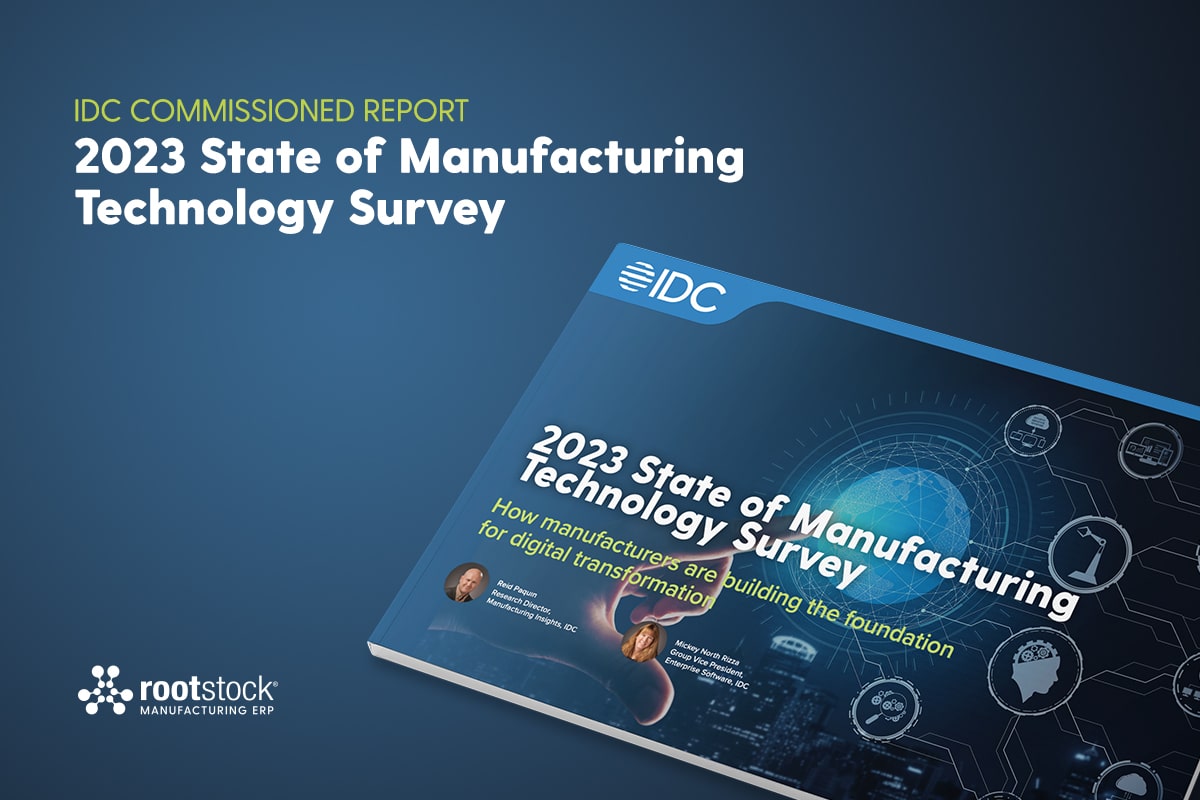Welcome to Rootstock Software’s Manufacturing News Roundup. We’ve assembled a list of the most relevant and engaging industry news from the recent quarter. This news update can help you stay up to speed on the latest trends in manufacturing, distribution, and supply chain operations and also help you prepare for 2023.
Industry Executives Optimistic About Demand Despite Inflation Troubles
IndustryWeek’s survey of executives for fifty of America’s largest publicly traded manufacturing companies revealed industry outlooks and predictions for late 2022 and early 2023. The survey reported notable optimism on customer demand and worries over inflation. While impressions of the supply chain and the labor force were divided and polarized, executives remain hopeful that customer demand can help drive business growth amid stubborn inflationary pressures.
Manufacturing Industry Outlook 2023
The manufacturing industry has shown resilience, Deloitte reports, surpassing growth expectations despite economic turbulence. For the next few years, inflation, supply chain disruptions, and talent retention will remain the primary obstacles to the manufacturing industry. The current market, however, demands an altered approach, and Deloitte details five trending strategies in the manufacturing industry ranging from investment in technology, talent management strategies, improvements to supply chain reliability, and corporate social responsibility and sustainability.
The State of Supply Chain
Repurposed post-pandemic supply chains will need to prioritize resilience and agility in order to meet the needs of their customers and suppliers, Accenture reports. Investing in risk response and utilizing technology platforms that increase supply chain visibility and flexibility will become an integral part of future business protocol. Accenture claims that manufacturers should focus on becoming future-proof. Preparedness will also accelerate business growth and offer a competitive advantage.
The trends discussed in this Deloitte article emphasize the importance of having the right technology to support supply chain resilience, such as Rootstock’s recently released Digital Supplier Collaboration.
Manufacturing Digitization Best Practices
This article from Chief Executive Magazine provides an overview of the vast extent to which manufacturers are digitizing their business operations, as well as a list of the best practices for successful implementation. The automotive and electronic sectors are anticipated to see the most sizable investment over the remainder of the decade, while the fuel and fast-moving consumer goods are also set to invest substantially in digitization.
Read the complete article here
10 Trends to Inform the Future of Digital Business Strategy
Researchers from IDC, a global market intelligence firm, anticipate the most influential trends that will shape the future of digital enterprise. For example, the trend of organizations investing in digitization is expected to continue, with IDC forecasting that spending on digital technology will grow by 16.9%, eight times the rate of overall GDP growth at approximately 2%. IDC also predicts a significant shift towards the increased importance of the strategic partnership between an enterprise and its primary cloud provider.
Knowing that these relationships are vital to manufacturers, Rootstock has continued to grow and invest in its Customer Success and Customer Enablement programs.
The Titanium Economy: Attracting and Retaining Talent in Manufacturing
Manufacturing in the US has been experiencing a labor shortage for years. McKinsey estimates that over the past decade, 2.4 million manufacturing jobs went unfilled in the US, costing the economy $2.5 trillion. Labor shortages have been a major obstacle to the growth of the American manufacturing sector and one of the primary reasons companies fell behind scheduled production. Strategies and solutions for solving the manufacturing workforce crisis range from the implementation of training, development, and retention programs, reforms to talent practices, compensation, and the hiring process, as well as legislation aimed to spur the growth of US manufacturing.
30 Under 30 (Manufacturing & Industry 2023)
Manufacturing gets a bad rap, portrayed as stodgy and unable to attract young, new talent. Forbes shatters this notion as it has highlighted 30 of the most innovative entrepreneurs in the manufacturing industry—and they’re all under the age of 30. From sustainable and energy-efficient textiles made in laboratories, to factory-inspection systems powered by artificial intelligence, and a new type of recyclable polymer enabling sustainable plastic manufacturing, these advances and profiles are sure to attract next-gen workers, especially when companies foster a mission-driven culture that promulgates improvements for society and the environment.






